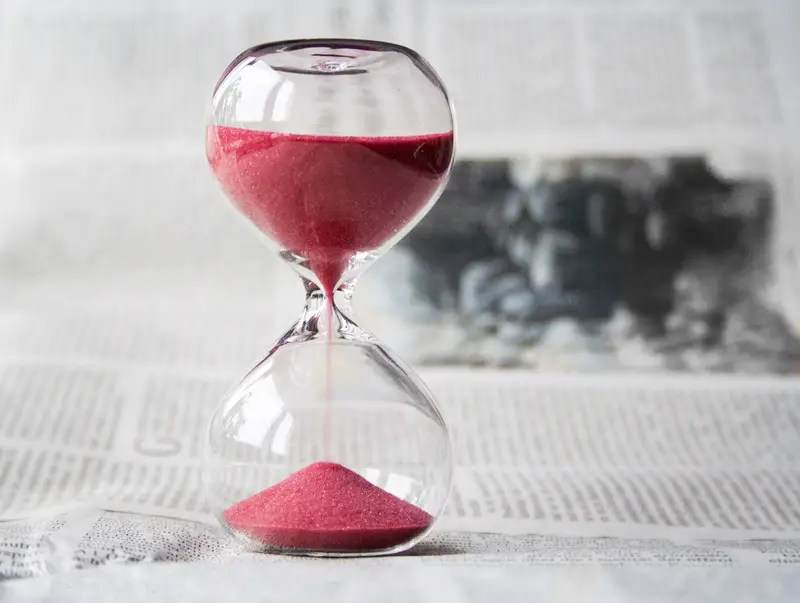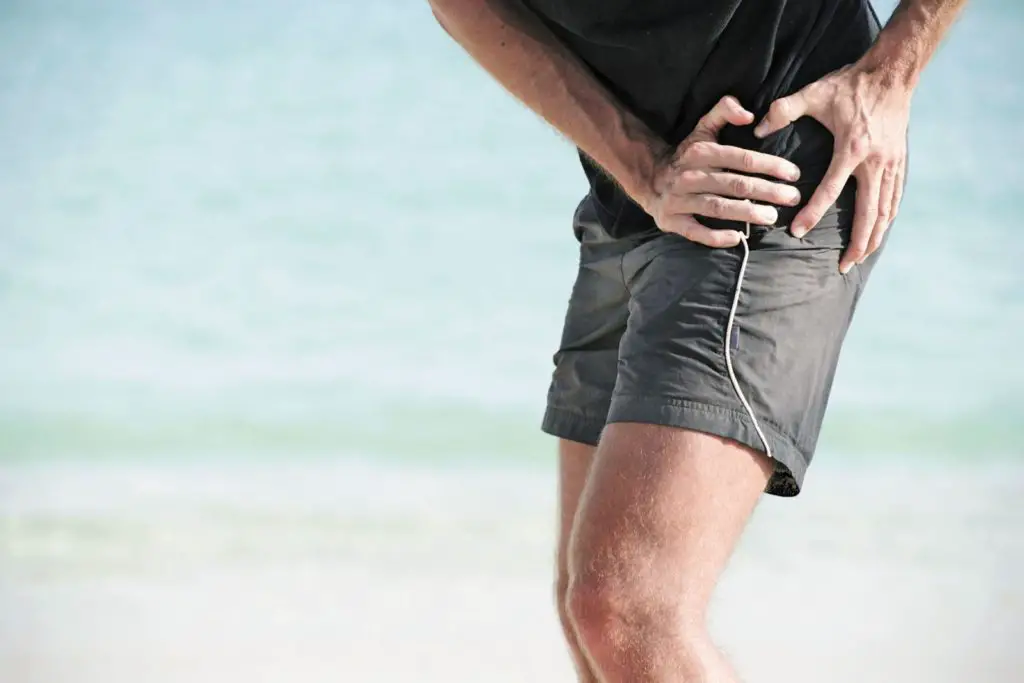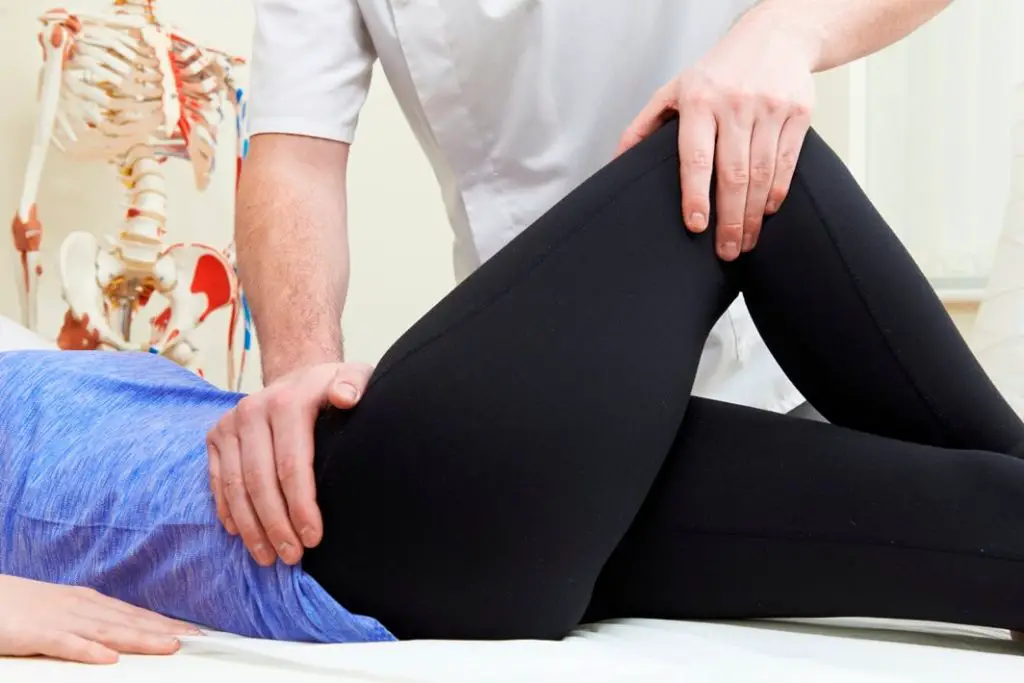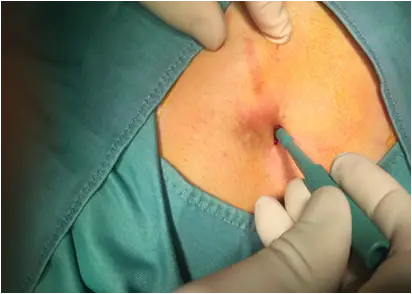Injury to the tendon in the affected part can cause hip tendonitis. The disease causes chronic hip pain that is often severe. This can affect the ability to be active, sleep well and enjoy life. You can relieve symptoms and regain your mobility with physiotherapy.
In this article, you will find all the information about the hip, its anatomy, the types of hip tendonitis and the prognosis for healing (how long does it last).
Definition and anatomy
hip anatomy
La hip is the largest joint in the body. It is commonly called hip joint.
It is formed by the insertion of the head of the femur inside the semicircular edge of the acetabulum (acetabulum). It's a ball joint maintained by several elements.
- A fibro-cartilage called the acetabular labrum which serves as a joint between the femoral head and the edge of the acetabular cavity.
- The ligaments: ilio-femoral de bertin (in front), pubofemoral (back) and ischio-femoral.
- Muscles: adductors, abductors, internal and external rotators, flexors and extensors.
- The capsule: cartilage that surrounds the entire joint. It is lined with a synovium which produces a liquid that lubricates the articular surfaces.
As for its mobility, the hip can perform several movements:
- la flexion and extension: movements of the legs back and forth;
- theadduction and abduction : leg movements laterally;
- la internal and external rotation: rotation of the toes inwards and outwards.
Types of hip tendonitis
Tendons are strong, flexible tissues that connect muscles to bones. They work in conjunction with the entire musculoskeletal system to enable various movements: moving, running, walking, sitting and standing.
La tendonitis is the most common pathology of the tendons. It is characterized by inflammation of the latter.
Regarding the hip tendonitis, it appears in case of inflammation of one of the tendons in relation to the joint.
La gluteal tendinopathy affects the tendons that connect to the muscles of the buttocks. These include:
- the gluteus maximus;
- the way (gluteus medius tendonitis);
- the small buttocks (gluteus minimus tendonitis).
Determining the type of hip tendonitis depends on the site of the pain and painful movements.
For more information, you can visit this page.
Hip tendonitis: prognosis
La tendonitis is a very debilitating disease. When it hits the hip, it causes pain when walking, especially when climbing stairs.
With early management and appropriate treatments, it is possible to completely cure hip tendonitis.
On the other hand, if the disease is neglected, the pain can become chronic, which prevents the slightest movement.
Hip Osteonecrosis: The Complete Guide
Article reviewed and approved by Dr. Ibtissama Boukas, doctor specializing in family medicine Osteonecrosis…
Hip pain after lumbar arthrodesis: What connection?
Hip pain after lumbar arthrodesis is a common complaint, but it…
Hip subluxation: Diagnosis and treatment (what to do?)
Hip subluxation is not always easy to diagnose. Unlike the dislocation of…
Orthopedic cushion to relieve the pilonidal cyst: the opinion of the physiotherapist
A pilonidal cyst is a common condition in young adults and adolescents that…
How long does hip tendon inflammation last?
La hip tendonitis will not heal on its own if you continue the activities that cause it.
For milder forms of tendinitis, healing can take about 3 weeks. And for severe forms, it can last 6 to 8 months. Some may not even recover.
Throughout the treatment, various elements must also be taken into consideration. These are the factors that speed healing and the factors that slow it down.
Factors accelerating healing
Here is a list of elements that can promote the healing of hip tendonitis.
Physical exercises
For cure hip tendonitis and allow the tendon to recover all its strength, it is appropriate to play sports. So, benefit from a specific exercise program designed to stretch and strengthen the affected muscle-tendon unit.
A healthy and balanced diet
Reducing inflammation inside the body will allow you to heal faster and more effectively.
To do this, eat dark leafy vegetables (broccoli, spinach, cabbage, etc.). They are rich in antioxidants which fight oxidative stress, one of the main causes of inflammation.
You need a good protein intake. This helps strengthen the muscles and tendons after tendonitis has passed. This also helps to reduce pain and fight against fatigue due to the long period of rest. Therefore, consider consuming protein-rich foods, such as raw dairy products or eggs.
You should also eat foods:
- rich in vitamin C: essential to help rebuild collagen);
- rich in zinc: help in the development and repair of tissues)
- rich in potassium and magnesium: help muscle recovery, improve circulation and promote relaxation in the body).
Early diagnosis
The sooner the diagnosis is made, the easier the treatment and recovery will be.
Monitoring by a healthcare professional
The healthcare professional can follow the progress of the treatment and adapt other therapeutic methods if necessary.
In parallel, the follow-up of a professional in physiotherapy is also important to better remobilize the hip joint.
Adequate treatment
Treatment for hip tendinitis relies on many points:
- rest ;
- taking painkillers;
- taking anti-inflammatory drugs;
- steroid injections;
- physiotherapy sessions; physical activity ;
- etc.
Factors slowing healing
As to factors that can slow the healing of hip tendonitis, we can cite :
- tobacco and caffeine: these substances bind to calcium and promote bone loss;
- alcohol: prolongs inflammation;
- muscle overload: can aggravate the injury;
- prolonged rest: can cause muscle weakness and sometimes joint stiffness;
- sugar: reduces immune function, slows wound healing and increases inflammation.
What about natural remedies?
Although they are not supported by solid scientific evidence, several natural products and home remedies are used to treat hip pain, especially for their anti-inflammatory power.
Here is a non-exhaustive list of plants and essential oils that are effective in controlling pain and inflammation. The products are available on the site Country. Use promo code LOMBAFIT15 if you wish to obtain one of the following products, or any remedy aimed at relieving your symptoms and improving your quality of life:
- Turmeric. Thanks to its antioxidant and anti-inflammatory powers very powerful, turmeric is one of the most used plants in a culinary and therapeutic context. The composition of turmeric is essentially made of essential oils, vitamins (B1, B2, B6, C, E, K) and trace elements. But it is to its composition rich in curcumin and curcuminoids that we owe them and calm skin of this spice.
- Ginger. In addition to the special flavor it brings to the kitchen and its aphrodisiac properties, ginger is a root well known for its anti-inflammatory powers. the gingerol gives it its anti-inflammatory action. It is an active component acting on the inflammatory pain related to chronic joint inflammatory diseases, including rheumatoid arthritis, lupus, rheumatic diseases, etc. It has been proven that this active element is also effective in acting on the inflammation linked to arthritis and sciatica. Ginger also has other benefits thanks to its high potassium content and its richness in trace elements (calcium, magnesium, phosphorus, sodium) and vitamins (provitamin and vitamin B9).
- Omega-3s. Omega-3s are polyunsaturated fatty acids that play a very important role in the functioning of our body. They are provided by food in three natural forms: docosahexaenoic acid (DHA), alpha linolenic acid (ALA) and eicosapentaenoic acid (EPA). Beyond their action on the brain and the cardiovascular system, omega-3s prove very effective against inflammation. Indeed, they have the ability to act on the inflammatory mechanisms in osteoarthritis by slowing down cartilage destruction, thus they reduce the intensity of osteoarthritis pain. Sciatica, being most often linked to an inflammation secondary to a herniated disc, it can also respond to omega-3 provided it is consumed regularly.
- Lemon eucalyptus. Eucalyptus is a plant most often used in the form of herbal tea or essential oil. She would have anti-inflammatory effects which give it the ability to act on the bone and joint pain in general and the pain of sciatica in particular.
- wintergreen. Wintergreen is a shrub from which a very interesting essential oil is extracted. It is one of the most used essential oils in aromatherapy. This oil extracted from the shrub bearing the same name, is used in massage to relieve sciatica and act like a analgesic. Indeed, it provides a heating effect thanks to its ability toactivate blood circulation locally.
References
http://www.orthosudmontpellier.com/les-pathologies/hanche/anatomie-de-la-hanche.html
https://www.chirurgie-orthopedique-drjalil.fr/departments/hanche/anatomie-de-la-hanche/





